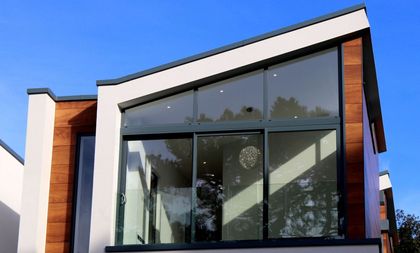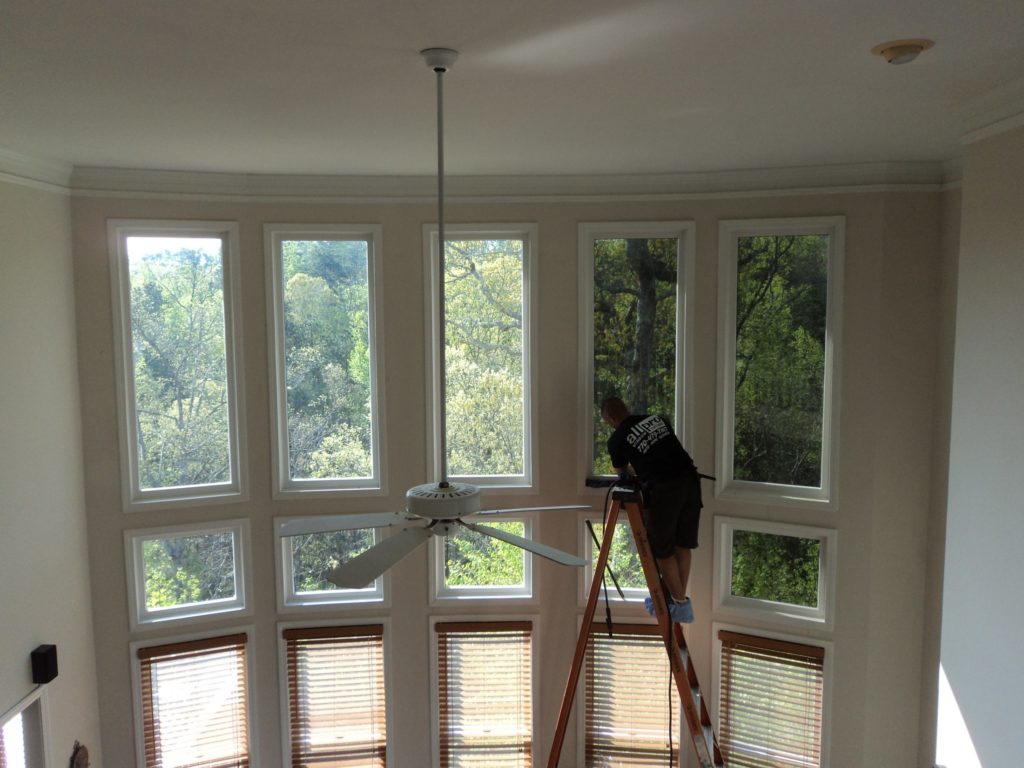Exactly How Residential Window Tinting Enhances Your Home's Energy Effectiveness
Residential home window tinting presents a compelling solution for homeowners seeking to improve power efficiency within their living rooms. By applying specialized films to windows, it efficiently lowers warm transfer, thus maintaining interior temperature levels and lessening the demand for excessive heating or air conditioning.
Comprehending Home Window Tinting
Understanding home window tinting is crucial for property owners looking for to enhance both comfort and power performance in their home. Residential Window Tint. Home window tinting involves the application of a slim film to the interior or exterior surface area of glass home windows. This movie can significantly regulate the quantity of sunlight and warm that gets in a home, hence influencing indoor environment conditions
There are numerous kinds of window tinting films available, each with unique residential or commercial properties. Dyed films soak up solar power, while reflective movies deflect it away from the glass surface. Ceramic movies use a balance of visibility and warm being rejected, making them a popular choice amongst house owners. The efficiency of home window tinting is commonly gauged by its Visible Light Transmission (VLT) portion, which suggests just how much light can travel through the film.
Benefits of Energy Performance
Home window tinting not only improves aesthetic appeals however likewise plays a significant role in enhancing power efficiency within property spaces. By reducing heat transfer through home windows, colored movies create a much more steady indoor climate, which can bring about considerable reductions in energy usage for heating & cooling. This power performance equates right into reduced utility costs, providing property owners with substantial long-term cost savings.

Furthermore, home window tinting boosts the convenience of living rooms. By decreasing glow and blocking dangerous UV rays, colored windows develop a more pleasant environment, which can cause improved wellness for passengers. The security against UV rays likewise assists protect furniture and flooring from fading, adding to the longevity of family products.
Just How Tinting Works
Tinting movies run with a combination of sophisticated products and technologies made to control the amount of solar power entering a home. Mostly made up of polyester, these movies commonly include metal or ceramic fragments that take in and mirror warmth. This twin capacity permits them to considerably reduce the infiltration of ultraviolet (UV) rays and infrared radiation while permitting noticeable light to travel through.
The effectiveness of home window tinting is gauged by its solar warmth gain coefficient (SHGC), which indicates how much solar energy is sent through the home window. Reduced SHGC values are more effective as they represent higher warmth being rejected. Furthermore, home window colors can include a range of shades, permitting property owners to tailor their aesthetic choices while enhancing energy performance.
Furthermore, these movies work as a barrier, avoiding warm loss throughout cooler months by reflecting interior warmth back right into the space. This thermal insulation result complements the cooling benefits acquired throughout warmer months, adding to a well balanced indoor climate year-round. By managing solar power successfully, household home window tinting not just boosts convenience yet additionally plays a vital role in decreasing energy usage and lowering utility bills.
Choosing the Right Tint

There are different kinds of home window films offered, consisting of dyed, metalized, and ceramic. Ceramic movies offer superb heat control without compromising exposure and are extremely sturdy, making Visit This Link them a popular choice.
Visible light transmission (VLT) is one more vital variable, as it shows the amount of natural light that can pass through the tinted glass. Property owners must choose a color with a VLT that matches their lights choices while still supplying ample glow decrease.
In addition, analyzing the solar warmth gain coefficient (SHGC) can aid establish just how well a color can obstruct warm from sunlight. A lower SHGC indicates better warmth control, inevitably boosting power effectiveness.
Setup and Maintenance Tips
Proper setup and upkeep are crucial components in optimizing the benefits of property window tinting. Experts also utilize specialized strategies and devices, which can boost the resilience and find performance of the tint.
Complying with installment, upkeep is important to extend the life of the home window movie. It is advised to wait at the very least 30 days prior to cleaning the tinted windows to allow the sticky to treat completely.
Dealing with these problems without delay can protect against further damages and maintain energy efficiency. By adhering to these installation and maintenance tips, house owners can ensure their window tinting proceeds to give substantial power cost savings and comfort for years to come.
Verdict
In conclusion, household window tinting offers as an effective option for enhancing energy performance within homes. By decreasing warmth transfer and blocking dangerous UV rays, window films add to lower energy intake and enhanced interior comfort.
Home window tinting involves the application of a thin film to the inside or outside surface of glass windows. By lowering heat transfer with home windows, colored movies create visit site a much more steady interior environment, which can lead to significant reductions in power intake for home heating and cooling.The effectiveness of window tinting is determined by its solar warmth gain coefficient (SHGC), which shows how much solar energy is transferred with the home window. By taking care of solar power effectively, domestic window tinting not just improves convenience yet additionally plays a vital role in decreasing energy usage and reducing utility expenses.
By minimizing warm transfer and obstructing unsafe UV rays, home window movies contribute to decrease power intake and boosted interior convenience.